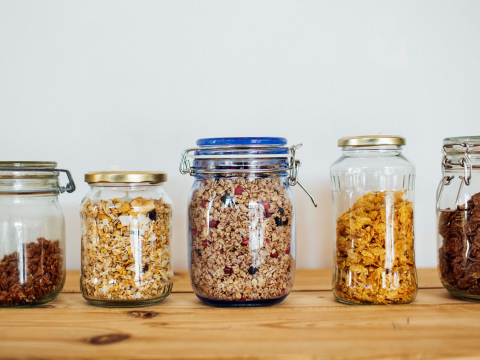By Tim Arnott — The average adult sleeps six hours and fifty-seven minutes. However, one in five sleep less than six hours per night. Additionally, 37 percent of young adults sleep less than seven hours a night. This proportion doubled between 1960 and 2002. There has been a significant increase in short sleep duration for all age categories from 1970 to present. Sixty million US adults have difficulty sleeping. Only 10 percent seek medical attention. The indirect costs from insomnia are estimated at $60 billion annually, including presenteeism (at work, but not productive), increased long-term disability, mistakes, errors, and accidents.
Now that we’ve looked at some sleep statistics, how much sleep do we need? The Sleep Foundation recommends seven to nine hours for adults. Recommendations vary depending on the age. It is recommended newborns sleep 14 to 17 hours, infants 12 to 15 hours, toddlers 11 to 14, preschoolers 10 to 13, school age children 9 to 11, teens 8 to 10, young adults and adults 7 to 9, and, finally, older adults 7 to 8 hours. Thus, sleep requirements and recommendations change throughout the lifespan.
We cannot get far into the subject of sleep before we need to discuss circadian physiology. Our circadian rhythm governs sleep. Our circadian internal clock is made up of central and peripheral oscillators. These tissues produce oscillating (alternating) currents that create the circadian rhythm. The central oscillators are found in the suprachiasmic nucleus (SCN) in the hypothalamus of the brain, which is the body’s main “clock”. Further, peripheral oscillators are present in every major organ, namely, kidney, liver, heart, adrenal glands, and pancreas. These facilitate synchrony and alignment between the central and peripheral clocks. The purpose of these clocks is to align physiologic functions and processes with the solar light-dark cycles for maximal efficient function.
Our circadian rhythm, and, thus, the wakefulness-sleep cycle is entrained by the day-night cycle. For example, the cortisol spike that wakes us up in the morning is regulated by our central “clock”. There are nerve pathways connecting the retina to the suprachiasmic nucleus (SCN), allowing sunlight to modify the internal oscillators or clock. Another nerve bundle runs from the SCN to the pineal gland which controls melatonin secretion, thus, allowing sunlight to adjust the melatonin levels. Specifically, melatonin secretion and timing may be changed as the melanopsin photopigment in the retina absorbs short wavelengths of light, especially blue light, stimulating neurons in the retina which are connected to our internal clock, in turn, activating it.
It’s not just light intensity and wavelength that influence our internal clock, entraining our circadian rhythm. Food can do it, mainly carbohydrates (found only in plants), the concentration of sodium, potassium, and chloride in the blood plasma, and the temperature of the surrounding environment. Furthermore, modifiers change the input the central clock receives. For example, our pupil limits the amount of light getting to the retina. Sunglasses and backlight on electronic devices change the intensity of light reaching the light-sensitive proteins in the back of the eye. These modifiers can weaken or alter the entraining process, throwing off our circadian cycle and, thereby, compromising sleep quality.
Interestingly, not everyone’s light sensitive proteins are identical. The DNA that encodes these proteins can vary in a single nucleotide of “letter”, shall we say. These differences are called Single Nucleotide Polymorphisms (SNPS), and they represent a slightly different blueprint for making our proteins. Thus, each person may make slightly different light sensitive proteins with slightly different shape and function. These proteins may have enhanced or reduced function, and this can alter the circadian clock effectiveness. For example, PER and CRY proteins are a critical part of the molecular machinery controlling the circadian rhythm in the peripheral oscillator or clock. PER and CRY proteins work against proteins “clock” and “cycle” until they break down. This process takes 24 hours. More light into the eye causes more PER protein to be made, and this is an important factor in training our internal clock. Individual variation in these proteins can change one’s ability to adjust their internal clock, which may hinder sleep quality.
With all this talk about circadian physiology and individual gene variation, what can actually be done to optimize sleep? It turns out there are multiple things we can do. Simple things. It is important to get bright intensity daylight onto our face within 30 minutes of awakening and continue this for 30 minutes. From late Fall to early Spring, one may need to use a 10,000-lux light box to simulate sunlight intensity for this purpose. One should not look at the light, but simply face it while eating, studying, or reading. Keep the light box 1 ½ to 2 feet away from the face, and, again, do not look directly at the light. Morning sunlight and/or the light box will shut off melatonin, so sixteen hours later one will get a melatonin spike, helping to put the body to sleep. One can do another 20-to-30-minute session in the late afternoon to help the body remain asleep longer, or you can simply go outside and be in bright sunlight at that time.
One of the ways the body puts itself to sleep is by cooling the core temperature and warming the extremities. Thus, if one is dehydrated, blood vessels in the arms and legs constrict, making it more difficult to transfer heat from the core. This hinders ability to fall asleep. So, stay well hydrated, but drink most water before lunch. For example, drink three glasses of warm water first thing in the morning. Then, starting an hour after breakfast, drink another glass every half hour until one hour before lunch. So, if you take three glasses at 6am, eat breakfast at 7am, then, restart water intake at 8am. You would be able to drink 6 more glasses between 8am and 11am. Thus, before your lunch at noon, you could drink your daily 8 to 10 glasses. It’s probably best to drink most of your daily water before 3pm to maximize sleep duration.
In addition to optimizing hydration, it’s easier to transfer heat from the core to the extremities as one loses weight. Thus, a whole food plant-based diet, with less than 10 percent calories from fat, especially if low glycemic, will ultimately help one shed pounds naturally, and with each pound that goes, it will be easier to transfer heat to the arms and legs, helping the body to fall asleep. Limiting sodium (salt) at dinner may help one fall asleep. Excess salt causes constriction of the blood vessels in arms and legs, again, hindering heat transfer from core to extremities.
There are other steps we can take to optimize sleep. Sleeping in a cooler room will assist the body in cooling the core temperature and wearing a pair of wool socks, over even one wool sock, may assist in transfer of heat to the extremities. Again, cooling the core and warming the extremities is a big part of being able to fall asleep. A temperature of 68 degrees in the sleeping room is recommended, but this recommendation should be individualized.
Not only is falling asleep without delay a priority, but staying asleep longer is desired because during later sleep stages REM sleep predominates. During REM sleep the amygdala gets rid of the memory of fearful events, thus, helping to extinguish fear and, thereby, reduce anxiety. If sleep is cut short, REM may be reduced, leading to increased anxiety. For the student, memories of an educational nature are consolidated during REM, thus, whatever shortens REM will also impair learning and memory.
Physical exercise also enhances sleep and memory. I can personally attest daily exercise and strength training will so fatigue the muscles sleep will come more quickly, be deeper, and one will sleep longer, so, take time to exhaust your physical body most days of the week. Every hour you exercise, you can expect to live that hour over again plus two or three to boot.
In summary, simple principles, such as drinking adequate amounts of water early in the day, taking a brisk walk toward the rising sun first thing upon awakening, getting outside again in the late afternoon and walking toward the late afternoon sun, sleeping in a cool room, wearing warm socks to bed, choosing a whole food plant-based diet, enjoying a judicious weight training program that exhausts the muscles on most days, avoiding caffeine and alcohol will all work together to improve sleep quality and quantity, which, in turn, will improve mood, reduce anxiety, and enhance memory and learning.
References:
Param Dedhia, MD, John Kelly, MD, MPH. Sleep Health Science and Interventions, Section 8, Foundations of Lifestyle Medicine Board Review Manual, 3rd Edition, © 2021 American College of Lifestyle Medicine, pp. 267-294.
Dr. Arnott is available for lifestyle consultations, at the Rocky Mountain Lifestyle Center or via telemedicine. Now is the time to optimize your immune for COVID and other chronic diseases.
Make an appointment on our website rmlc.online or call 303-282-3676.



